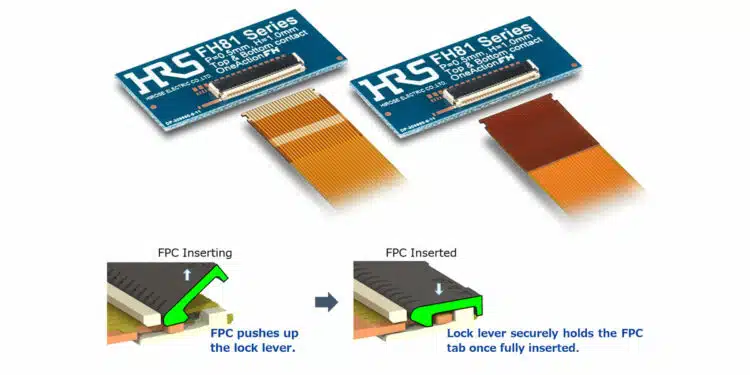Hirose introduces FH81 series with one action and top & bottom contact connectors that improve design flexibility and workability in portable devices.
Hirose has developed the FH81 Series for consumer devices such as notebook PCs and VR headsets.
This top & bottom contact, One Action connector enhances both design flexibility and workability.
It shares the same dimensions as the long-established FH34 Series (0.5mm pitch, 1mm height) but offers expanded One Action functionality and supports a wide range of board layouts.
In addition to simplifying processes and enabling automated assembly through the One Action structure, the FH81 also provides higher FPC retention force thanks to its optimized internal mechanism.
Example of expected application
• Portable devices such as laptops and VR devices
Contributing to Consumer Market Growth by Enhancing Design Flexibility and Workability
In the consumer market, high-density component mounting has created design challenges and increased the demand for connectors that support automated assembly.
To meet these needs, Hirose developed the FH81 Series—One Action connector with top & bottom contact. It shares the same size (0.5mm pitch, 1mm height) as the long-running, popular FH34 backflip series, but offers expanded One Action functionality and greater design flexibility.
Because it features top & bottom contact and does not rely on contact direction, the FH81 can be used across a wide variety of layouts and applications. It offers reliable actuator stability with no risk of disconnection or damage during One Action operation. Its compatibility with automated assembly reduces the potential for human error, while the actuator mechanism provides strong FPC retention—even at lower pin counts.
Features
・High operability with one action lock, ideal for robot assembly
・Top & bottom contact enhances design flexibility
・Secure connection with strong FPC retention force
・Compatible with same size as popular FH34 series (0.5mm pitch, 1mm height)
Future Product Development
・Current Available Position Variation: 24pos.
・Under Development: 4, 6, 8, 10, 16, 20, 24, 26, 30pos.
Hirose Electric will continue expanding its consumer market connector lineup—including the FH81 Series—to meet evolving needs for improved design flexibility and workability.































